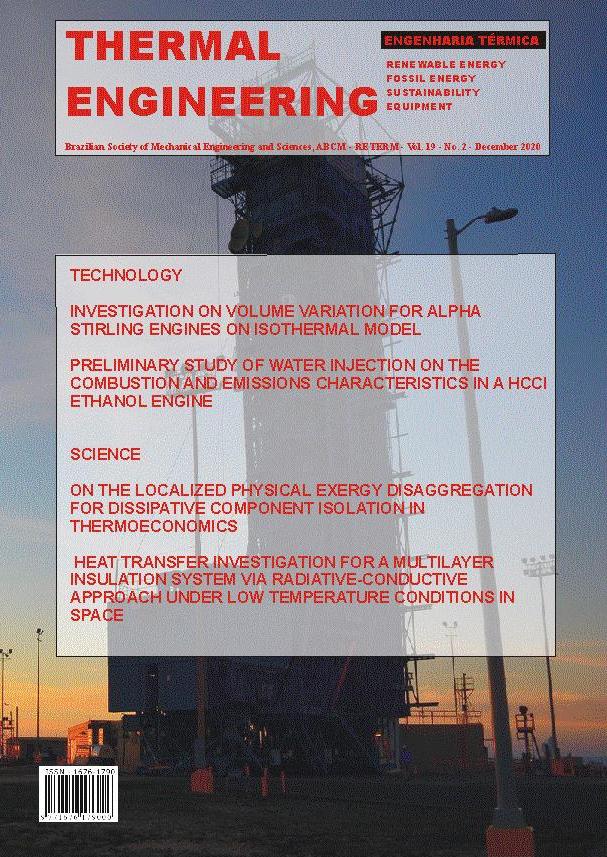ON THE LOCALIZED PHYSICAL EXERGY DISAGGREGATION FOR DISSIPATIVE COMPONENT ISOLATION IN THERMOECONOMICS
DOI:
https://doi.org/10.5380/reterm.v19i2.78618Palavras-chave:
cost allocation, dissipative components, physical exergy disaggregation, thermoeconomicsResumo
Thermoeconomics is a discipline that connects Thermodynamics and Economics concepts, usually used for rational cost allocation to the final products of a thermal plant, by means of a model that describes the cost formation process of the overall system. Generally, exergy or monetary costs of the external resources are distributed to the final products. Exergy is the thermodynamic magnitude used in thermoeconomics and the physical exergy disaggregation has been introduced in thermoeconomics as alternatives for the isolation of the dissipative components and residues allocation. For plants with dissipative equipment, such as condenser or valve, the productive diagram, based on total exergy (E Model), need to merge this dissipative equipment with other productive components. In order to isolate the condenser, the productive diagram must use, at least, the H&S Model and to isolate the valve, the UFS Model has to be considered.Both disaggregation models greatly increase the thermoeconomic modeling complexity. Bearing this in mind, this work aims to evaluate the advantages of combining the E Model with these other models in order to adequately isolate the dissipative equipment. The plants studied herein are two different steam turbine cogeneration systems, with dissipative components (condenser or valve). The different monetary and exergy unit costs obtained for the two final products of each plant are compared and analyzed. The results show that localized physical exergy disaggregation for dissipative component isolation in thermoeconomics is feasible, since it reduces the complexity of the productive structure and is also consistent from the point of view of thermodynamics.
Downloads
Publicado
Como Citar
Edição
Seção
Licença
Direitos Autorais para artigos publicados nesta revista são do autor, com direitos de primeira publicação para a revista. Em virtude da aparecerem nesta revista de acesso público, os artigos são de uso gratuito, com atribuições próprias, em aplicações educacionais e não-comerciais.





